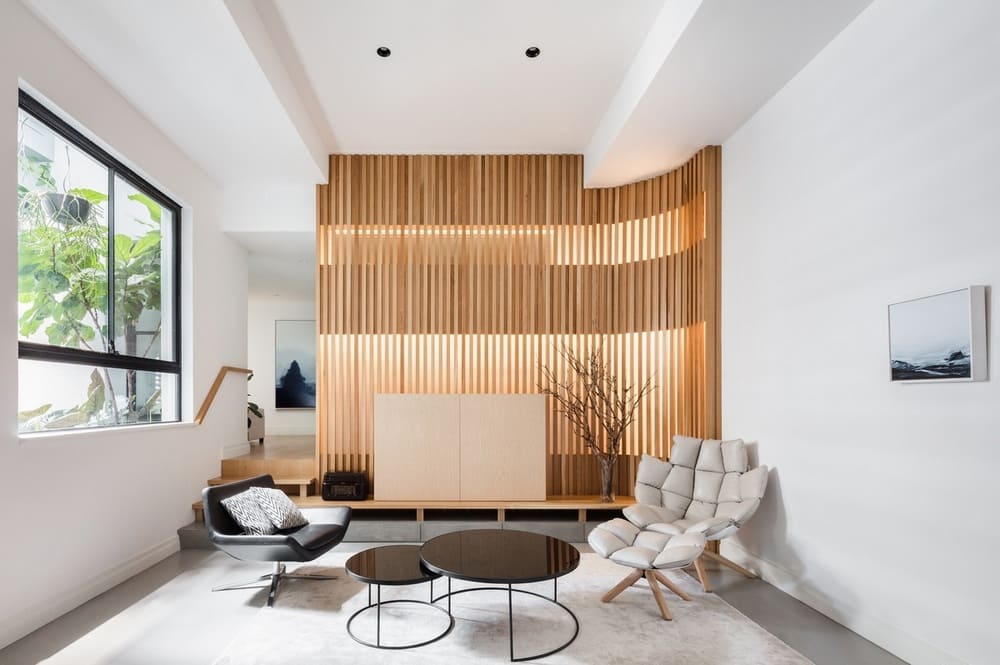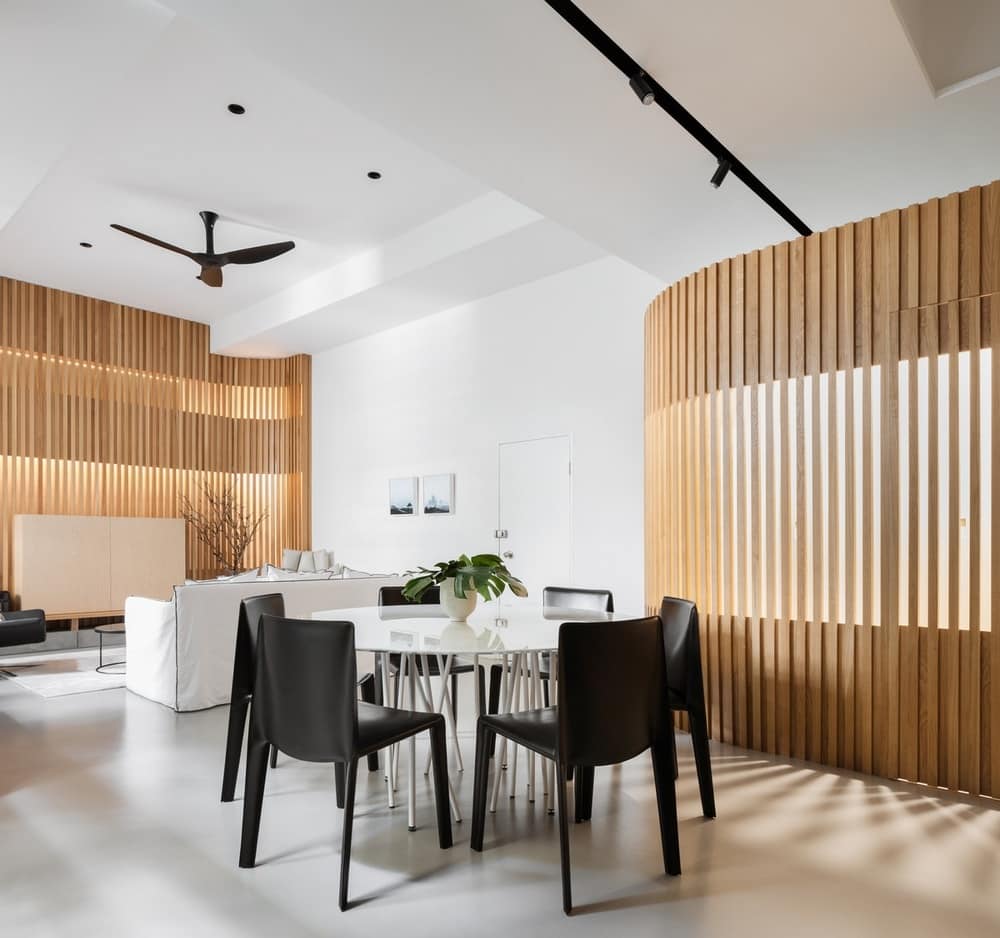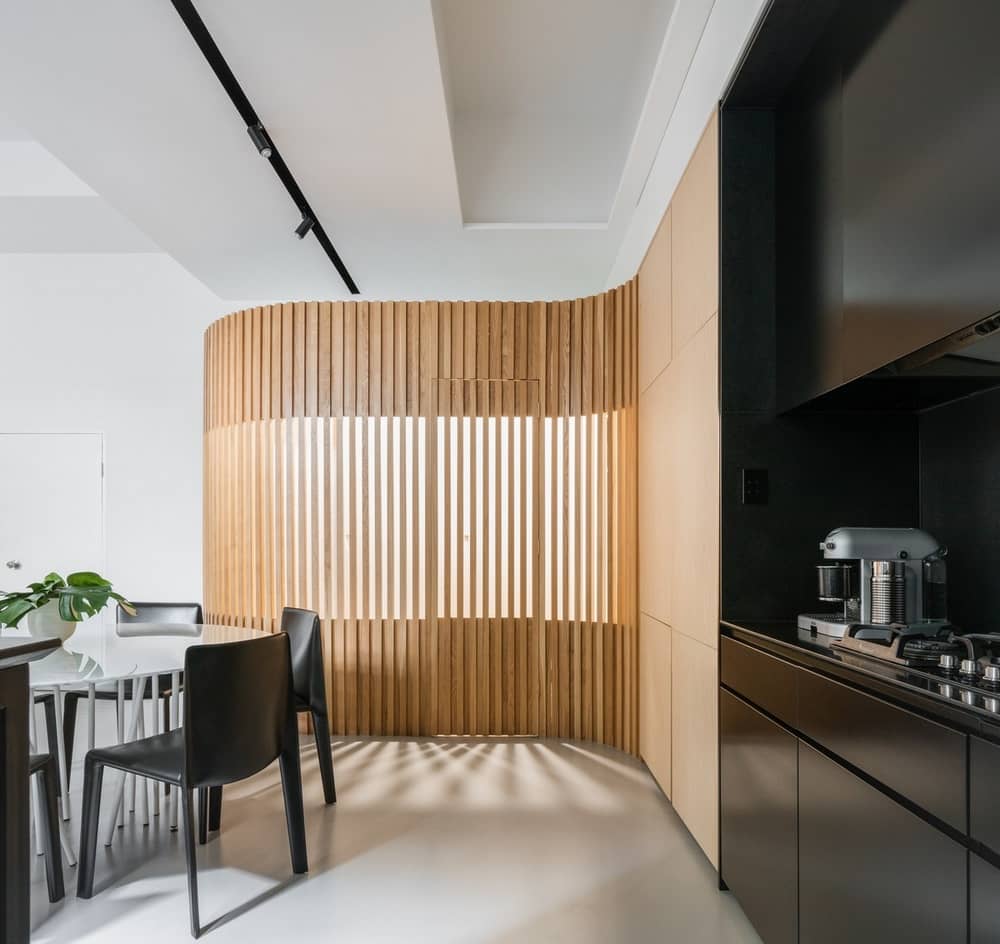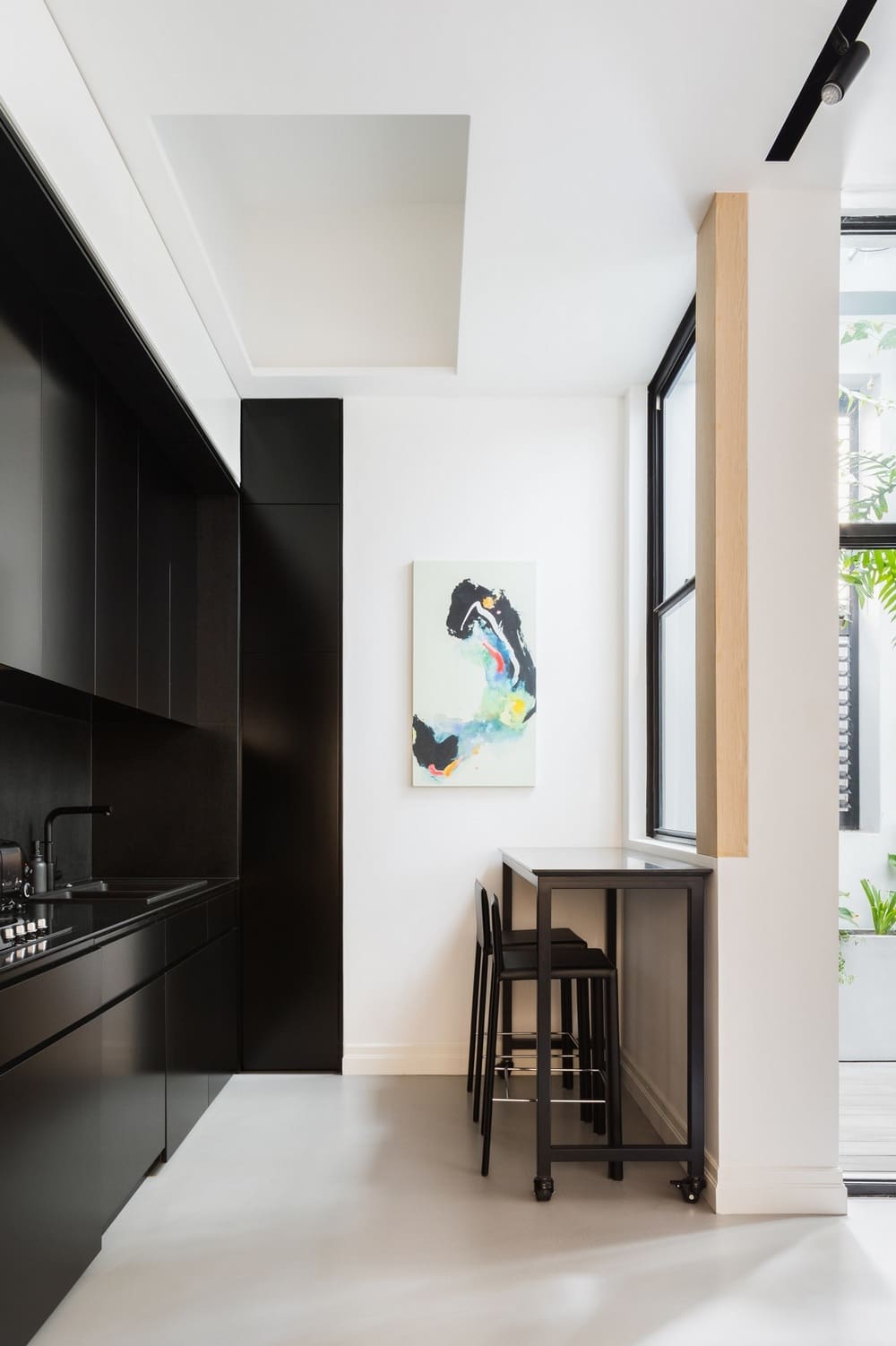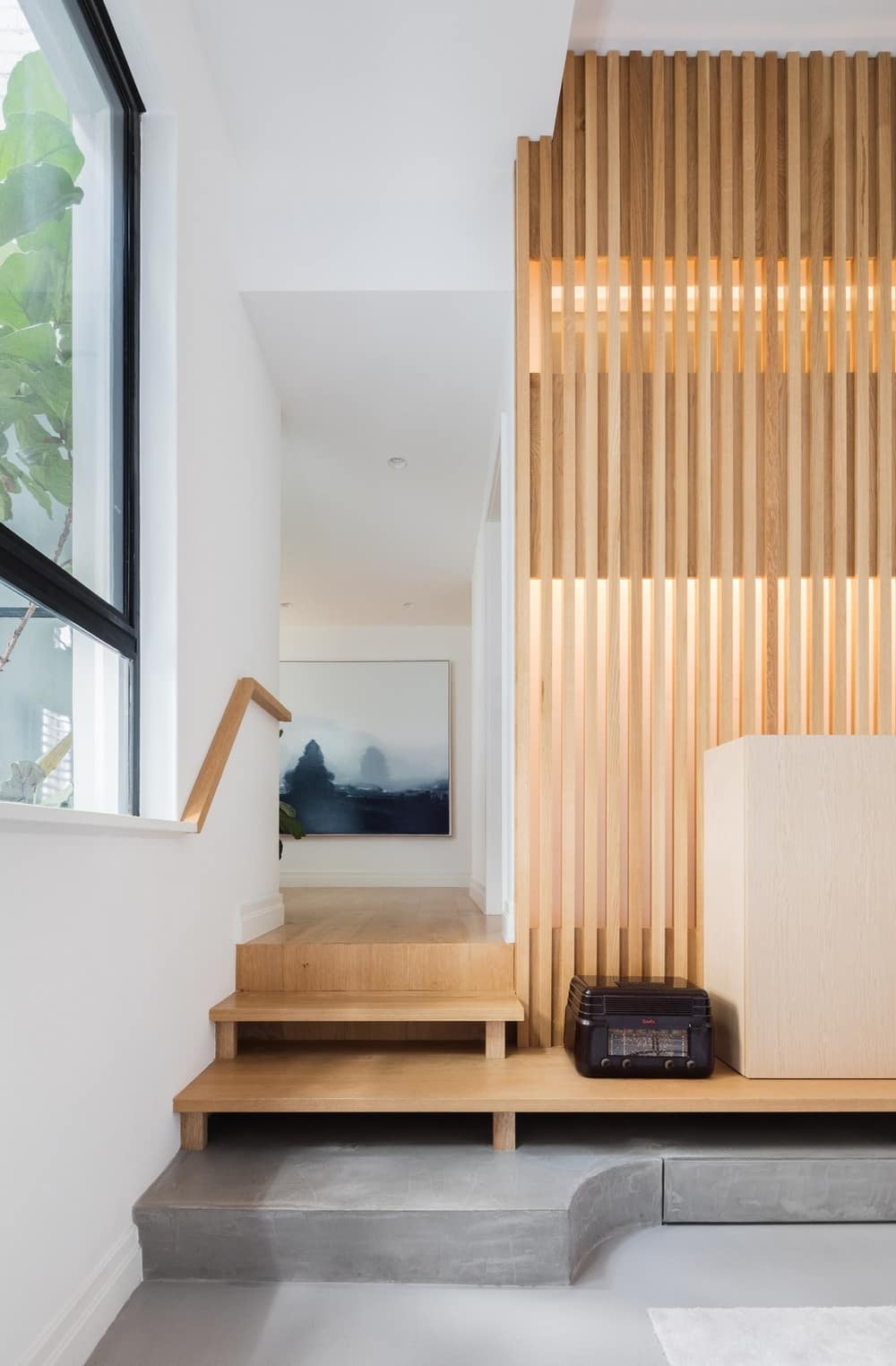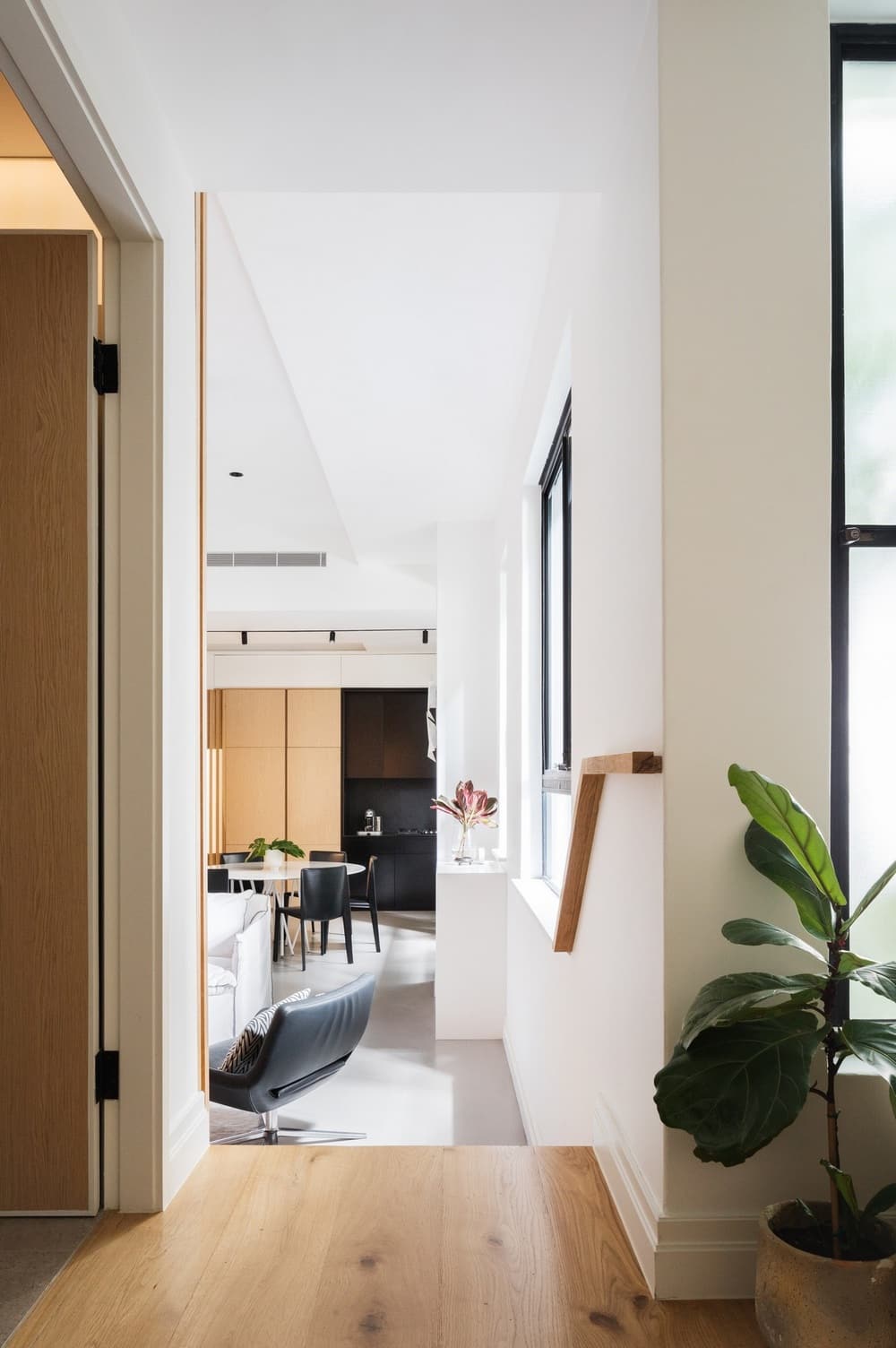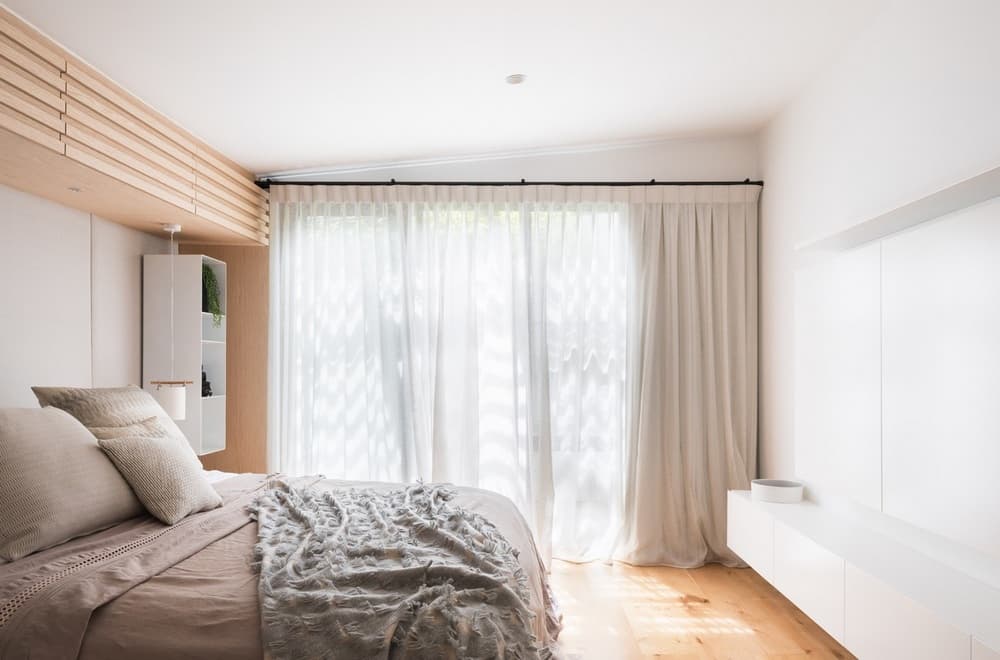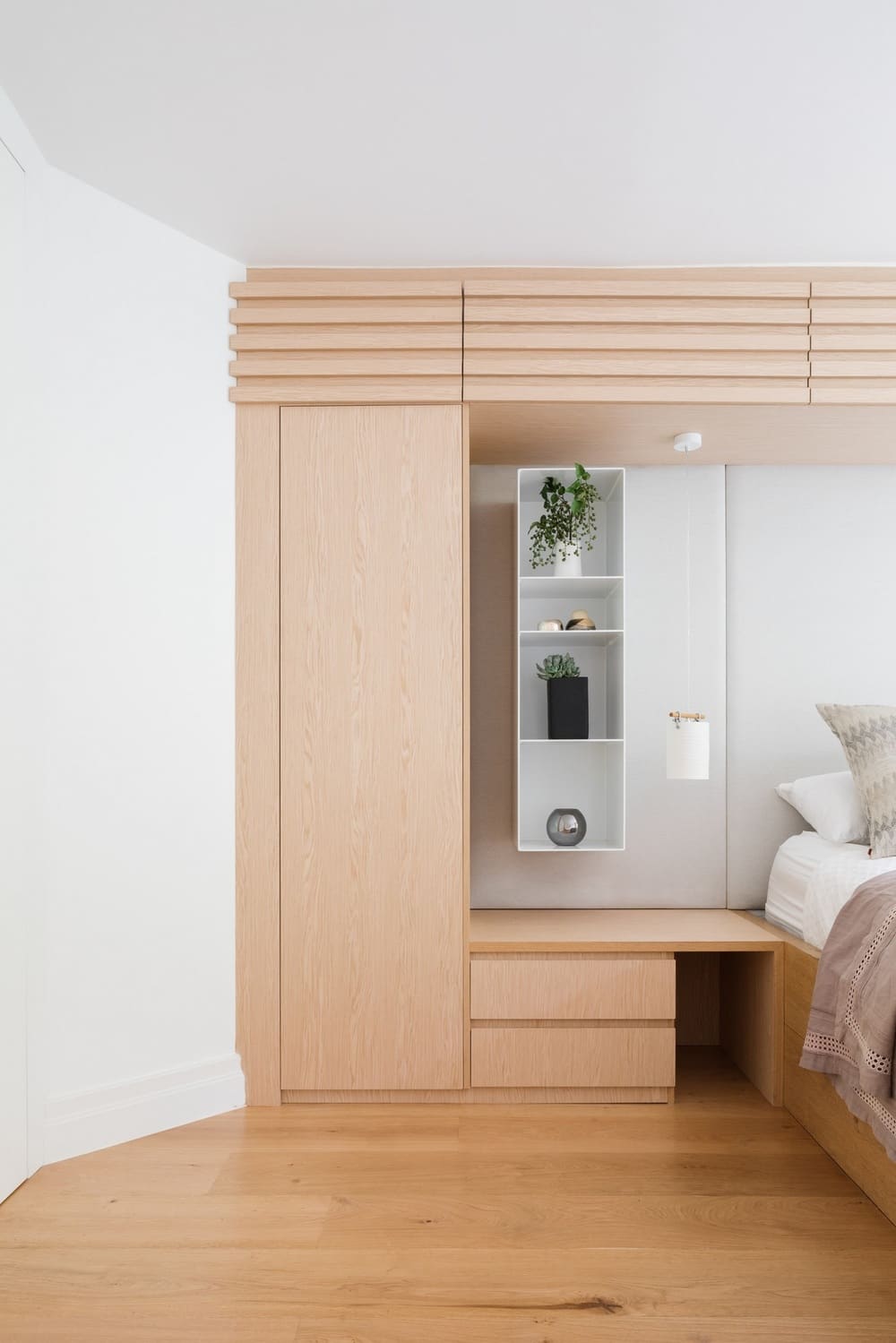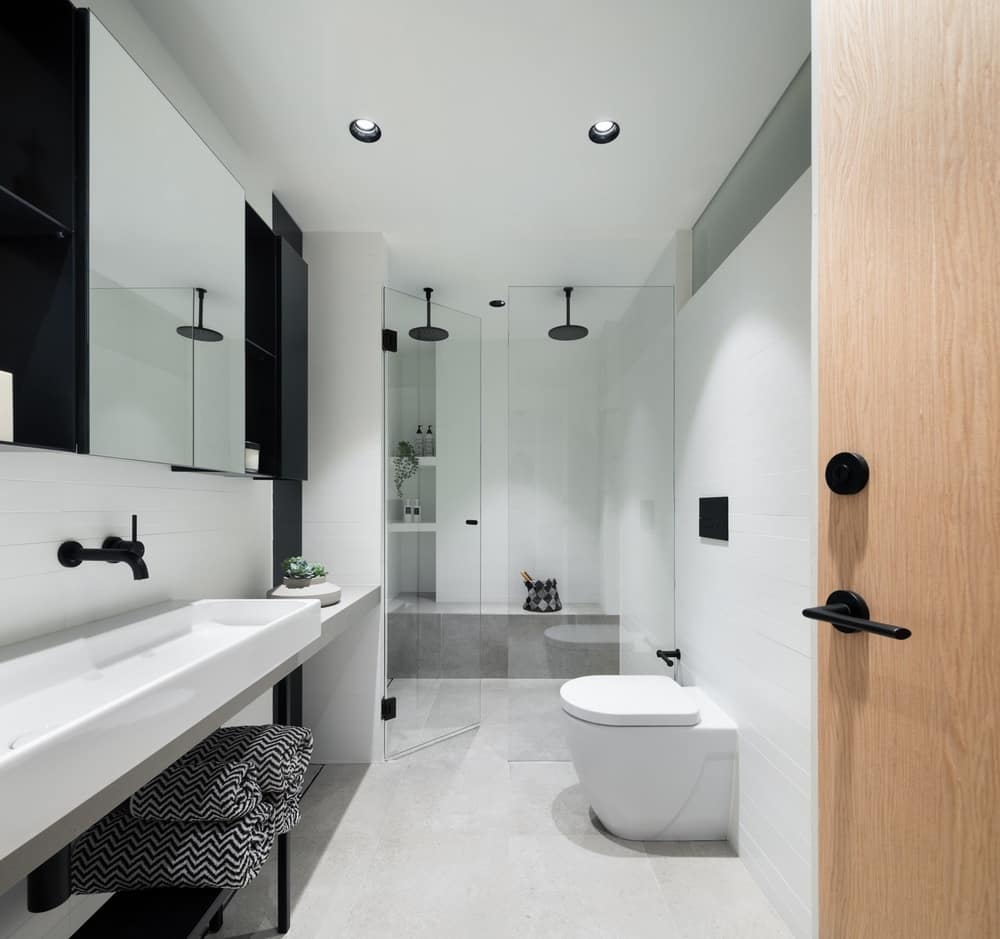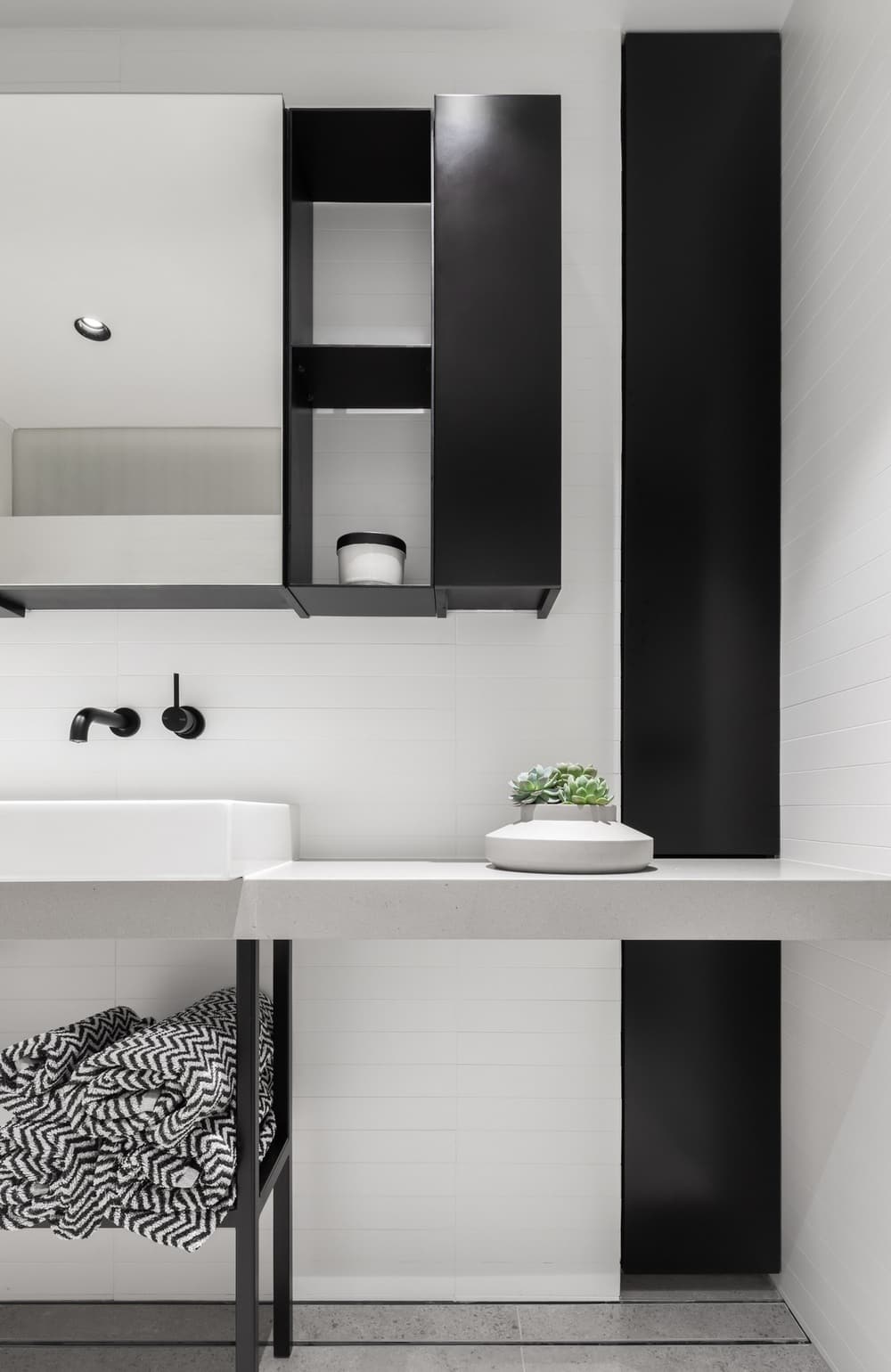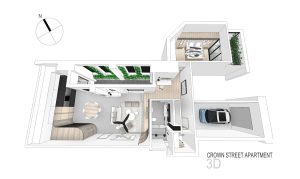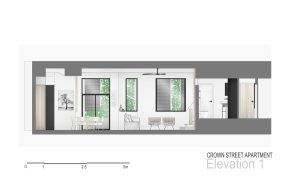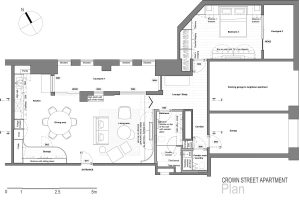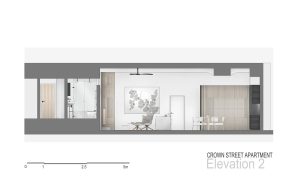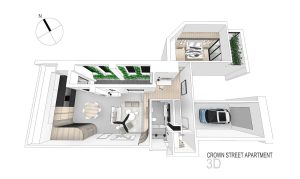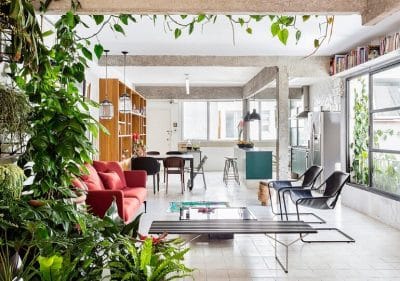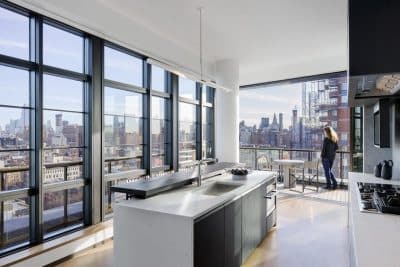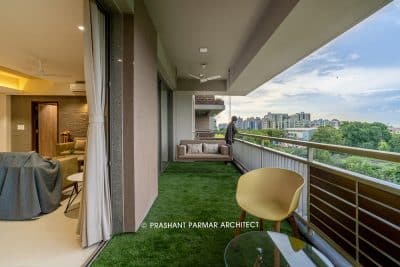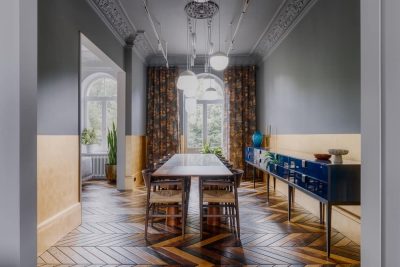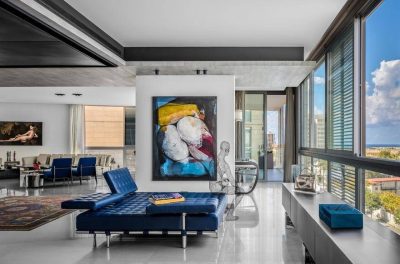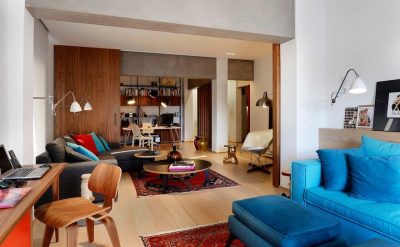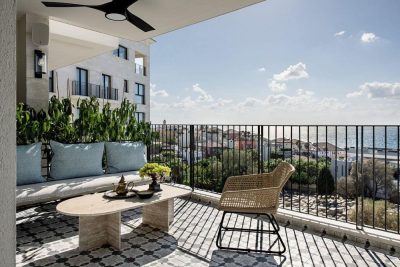Project: Crown Street Apartment
Architecture and Interior Design: Brooke Aitken Design
Location: Darlinghurst, New South Wales, Australia
Phootol Credits: Katherine Lu
Nestled within the busy inner-city of Sydney, this warehouse converted apartment is infused with elemental Japanese design to create a minimalist, sustainable oasis that invites reflection and relaxation for a retired couple.
The Crown Street Apartment is located at the back of a ground level 4-floor old warehouse in the heart of a busy inner-city area famous for its restaurant life. All windows overlook two small internal lightwell courtyards that provide no aspect to the street, nor any views. At times, no direct sunlight penetrates the apartment altogether. It did however have expansive ceiling heights which had been lost within a warren of small rooms on different floor levels. We saw the potential that it could provide a level of introspection and calm from the city.
Having been influenced by their travels to Japan, our clients wished to reduce household possessions and enjoy their retirement in a minimalist calm oasis whilst being connected to the buzz of society on their doorstep. We deleted a bedroom and created a large living area grounded by a polished concrete floor. We emphasised the great ceiling height with timber screening that acts as a backlit interior forest of soft coloured oak. A change in floor height indicates the change to the ‘night’ level of the dwelling, timber-floored for bare feet use of a study, bedroom, and bathroom. Throughout, materials were chosen for their minimalist and natural properties.
This project is a re-imagining of what retirement living can be. Our clients expect to live out their lives in this property. Details and materials were not only considered for their aesthetic effect and the corresponding mental health effect to the occupants, but also for their longevity, durability, and practical use. Kitchen size reduced to increase well-ordered storage space, whilst concurrently the previous family home possessions were filtered to a minimum. The focus became the aesthetic experience of a day passing in an emptier living space and each element within was chosen to increase enjoyment, ease of use and comfort.

